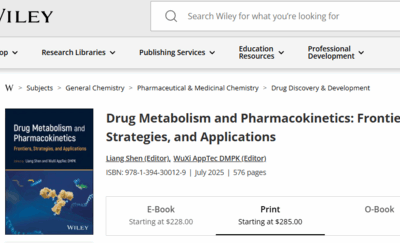In the design of a preclinical program, identifying and understanding the broad classification of the molecule is the priority. Is it a small molecule, a chemical, a manufactured drug? Or is it a biologic or a large molecule, a construct of amino acids, providing a protein or some sort of amino acid chain?
Historically, small molecules and biologics have followed different routes within the U.S. Food and Drug Administration (FDA) in terms of which groups are assigned to them. Small molecules were legacy drugs. They had a lot more foundational experience as far as what is the expectation in testing chemicals versus testing biologics. Biologics will continue to mature over time.
Once toxicology studies were started in the 1970s, those trials were conducted purely on small molecules, chemicals, and pesticides, because biologics hadn’t been discovered. Scientists take all that history into account as the foundation for how they will proceed in putting together the nuts and bolts of the initial study designs.
When a design is being created, understanding the capabilities and resources of the client is important to properly set expectations. If it’s a small company with one molecule and some mission capital and scientific ability or drug development expertise, they will have a different set of objectives, drivers, timelines, levels of oversight and care than a larger pharmaceutical company. Entering a preclinical trial, a large pharmaceutical company will know what they need and have it outlined in a plan. So the scientist designing the study is basically fitting into their overall plans and providing a service.
“As toxicologists, we provide the sponsor with an appropriate toxicology study design for their program to meet regulatory requirements,” said Xiaoxia Li, Executive Technical Director at WuXi AppTec. “In addition, we also help them set up appropriate milestones including drug manufacture, Investigational New Drug (IND) enabling study execution and regulatory submission.”
Working with a large or small company, the process is usually very complex. This is why milestones are established to track what must be done along a set timeline. Staying on track and managing expectations is very important.
In the end however, regardless of how structured and organized the study may be designed and executed, success will ultimately be determined by how the molecule performs – what it actually does. But along the way, if the scientists are making their best efforts throughout the process, they know they are doing their job in the best interests of their client.
Successful drug development can often be attributed to teams that plan realistically and proactively for proper preclinical studies and the completion of the IND application. Whether you’re a smaller drug development company or your team is running lean, the preclinical process presents capacity challenges, as well as limits to budget and expert availability. Still, drug developers of all sizes and compositions have the potential to make revolutionary breakthroughs, so don’t let the shift from discovery research to regulated safety assessment impair progress.
Our experts bring you a wealth of technical and industry knowledge to help move your molecule to the next phase or to trouble shoot along the way.
We’re here to answer any questions you may have, contact an expert.
As a global company with operations across Asia, Europe, and North America, WuXi AppTec provides a broad portfolio of R&D and manufacturing services that enable the global pharmaceutical and life sciences industry to advance discoveries and deliver groundbreaking treatments to patients. Through its unique business models, WuXi AppTec’s integrated, end-to-end services include chemistry drug CRDMO (Contract Research, Development and Manufacturing Organization), biology discovery, preclinical testing and clinical research services, helping customers improve the productivity of advancing healthcare products through cost-effective and efficient solutions. WuXi AppTec received an AA ESG rating from MSCI for the fourth consecutive year in 2024 and its open-access platform is enabling around 6,000 customers from over 30 countries to improve the health of those in need – and to realize the vision that “every drug can be made and every disease can be treated.”


